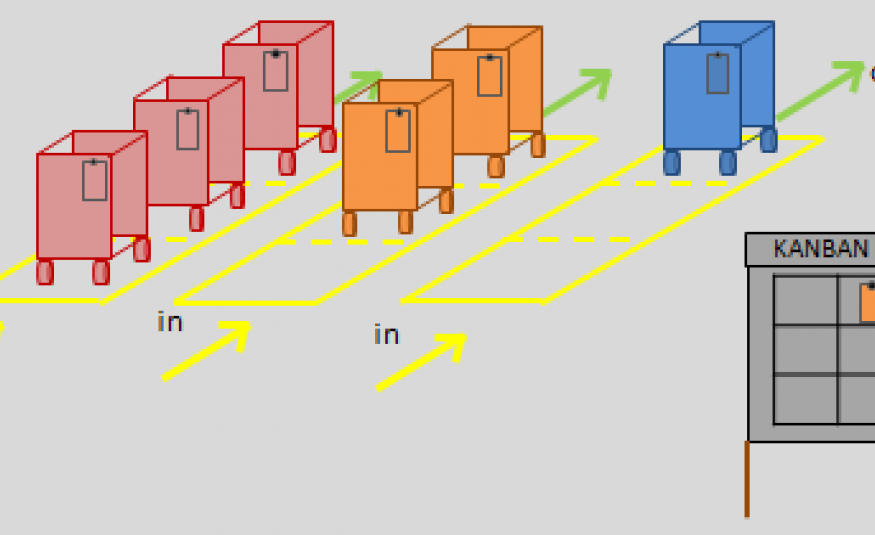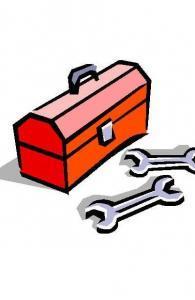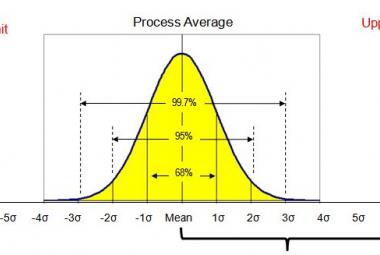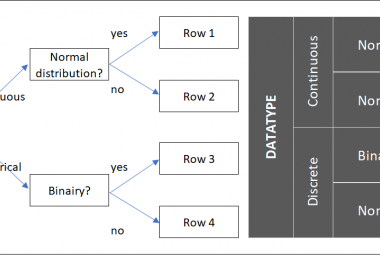The supermarket is one of the three pull strategies that can be implemented as connection between to process steps when designing a Future State Value Stream Map. The supermarket will only be considered when One Piece flow and First In First out (FIFO) are no longer an option (as explained here).
A supermarket is a method of managing inventory in which a variation of parts can be kept without knowing in what order the parts will be taken from the inventory. This means an internal customer will take a random part from the supermarket, after which the (internal) supplier replenishes the taken parts supermarket at a certain interval. A Pull connection with supermarket is therefore also known as a replenishment pull system. To inform the (internal) supplier about the parts that need to be replenished, Kanban can be used.
This article describes situations in which the supermarket can be used, how the location and size of the supermarket can be determined and what a supermarket can look like in praxis.
A SUPERMARKET is a combination of FIFO lanes for different parts. When workstation B uses cases in different colors and is unknown how many of each color it needs per day, a supermarket in front of workstation B will contain a FIFO lane for each possible color. This shows why a FIFO lane is preferred over a Supermarket. When there are 5 possible colors in de supermarket, transforming the supermarket into a FIFO lane, in which is known how many of each color is needed at workstation B, will reduce inventory at that pull connection with 80%.
So WHEN does it make sense to have a supermarket instead of a FIFO lane or even One Piece Flow? A few examples are when:
- Value streams come together from- or are split into different value streams. The workstation that functions as a node between the different value streams is called a shared resource, which can only work for one of the value streams at a time.
- When the Finished goods Strategy is chosen to be made-to-stock, a supermarket at the end of production.
- When supplier lead time is high and or variable, a supermarket in the form of a warehouse can buffer this variability, for instance when the production interval is one day and the supplier interval one week.
- Reliability of the downstream workstation is low. When a defect is found, a new part can simply be taken from the supermarket because unlike in FIFO lanes or One Piece Flow, it is not connected to a customer order.
- Change over times of the downstream workstation are high, in which case the supermarket is used for batches to fill.
In all the above examples. the challenge would be to improve these parameters to be able to turn the supermarket into a FIFO lane and thereby improving flow.
THE SIZE OF THE SUPERMARKET in each of the above situations is defined by the time which needs to be buffered, for each product in the supermarket. For each of the situations described above, the Supply-interval is leading:
Number of positions per product type = (Demand per Supply-Interval) + safety stock
A Plan For Every Part (PFEP) can be useful when the number of products in a supermarket is relatively high, especially when the supplier varies per product. In the PFEP database, all interesting information about a part can be kept, for instance the name of the supplier, batch sizes for both delivery and how production uses it, the average daily demand and the lead time.
There are two well-known ways of implementing the supermarket principle, a supermarket with Kanban cards and the so called two-bin-system, in which bins are used as signals themselves.
THE SUPERMARKET WITH KANBAN is shown in illustration 1. Every position in the supermarket is represented by a card, which can be plastic or paper, on which all required information to replenish the slot in the supermarket is written, like the location of both the slot and the supermarket, the supplier for that part and how many items go in one batch.
The Kanban card is the authorization to produce. The Kanban cards are usually visualized on a Kanban board, of which an example is also shown in illustration 1.
This form of supermarket can be implemented in almost all situations.
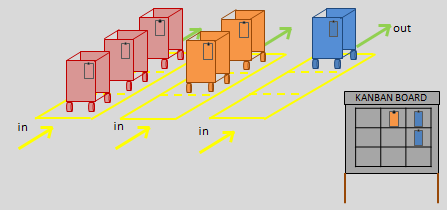
Illustration 1: Example of a supermarket with Kanban Cards
The TWO-BIN SYSTEM is a form of a supermarket in which bins are used as Kanban cards. In this system, every part has two assigned bins, filled with parts. Whenever one bin is empty, it is placed on top of the rack, as a signal to the transporter that it needs replenishment (see illustration 2). This type of supermarket is often used for small and relatively cheap material, which are needed at multiple workstations, like bolts and pins, because the impact on financial costs and the space of WIP is relatively small.
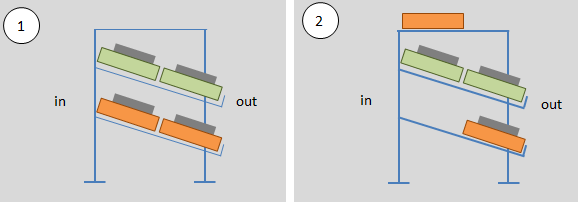
Illustration 2: example of a 2-bin-system
The supermarket is after One Piece Flow and FIFO the last possible way to implement Pull. The goal of the supermarket will always be to reduce it in its size, or to eliminate it by transforming it into a FIFO lane or even One Piece flow.
The size of the supermarket can be controlled by the number of bins or Kanban cards in the system. By adding or removing bins or cards the level of WIP can be managed.
Continue to:

